Note: This post contains affiliate links. As a Skillshare Affiliate and Amazon Associate I get commissions for purchases/signups made through links in this post.

Have you ever sat in front of a blank sheet of paper wanting to draw a human face, a horse or maybe a nice lodge by the lake?
Have you then wondered, well, HOW THE HELL do I draw a human face, a horse or… a nice lodge by the lake?
Well, those days are over because in this article I’ll show you how to draw ANYTHING.
In fact, it’s just one simple realization that can make all the difference in how you approach a drawing and perceive its difficulty level.
So let’s dive right into it!
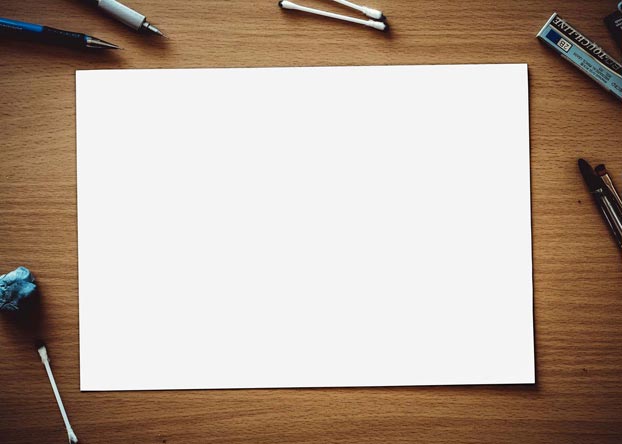
CHECK OUT: Must-have Art Equipment I Recommend
Table of Contents
The One Small Change Of Viewpoint That Can Be Eye-opening
I remember quite vividly how I watched several YouTube videos on drawing and painting a while back and stumbled upon a gold nugget:
This video describes how you can basically see everything you want to draw or paint as shapes with hard or soft edges. So that means:
Drawings/Paintings are a collection of shapes in different values/colors with either hard or soft edges.
Duh! No shit, Sherlock!
But think about it: When all is said and done, that’s basically all an artwork is. The question is what you do with this piece of information, and really, that’s the good part!
So, in essence, you can use this knowledge when looking at a reference image. Thinking in reverse you will basically ask yourself the following questions:
- What value/color is this shape?
- Does it have a hard or soft edge?
By asking yourself these questions instead of „How To Draw An Eye“ or „How To Draw A Face“ you will be able to shift your focus away from „I’m drawing an eye“ and „I’m drawing a face“ towards the important things:
Shapes, values, edges.
By focusing on this you can really copy ANY reference image and draw ANYTHING.
„But Daniel, I want to draw a horse from my imagination! I don’t want to copy images!“
I know. I guess that’s what all artists strive to do. (Well, not drawing horses in particular…) But to get there you have to realize another important thing…
CHECK OUT: 30 Quick And Easy Drawing Tips To Boost Your Progress
The Second Way You Should Change Your Mindset
I’ll get right to it:
All good artists use references.
Yes. They really do.
It might sound surprising, but even the best artists among humanity use and have used references. ESPECIALLY, if they’re trying to learn how to draw something freehand.
Granted, several hundred years ago artists didn’t have reference photos… but they had live models.
And it’s ok.
You have to stop believing that using references is „cheating“. In the end, this false belief is holding back your progress.
I get where you’re coming from. I really do.
When you show one of your artworks to other people, they will most likely say things like “Oh, it looks great!” and “Wow, so good!”. (Provided your artwork really IS good…) But one thing almost everyone will ask after that is “Did you draw that without a reference?”. It’s a natural question for people because it obviously takes way more skill/practice to draw something freehand from just your imagination than from a reference image.
But you have to understand that it’s basically impossible to LEARN how to draw something freehand without using references of any kind. Why?
Think about it like this: Your brain can process a lot of information. Still, it’s programmed to only store as much information as is necessary for your survival. When crossing a street, you need to be able to instantly recognize cars because fast-moving cars are a threat to your survival.

So you KNOW when a car is approaching because you know how it SOUNDS and more importantly what it LOOKS like.
You know how it looks, but does that mean that you’re able to draw it? No. Of course not. Just ask some of your non-artist relatives to draw a car. The result will probably somewhat resemble a car… but look like a 5-year-old drew it. Duh.
They know what a car looks like. But how they picture a car in their head is rather symbolic.
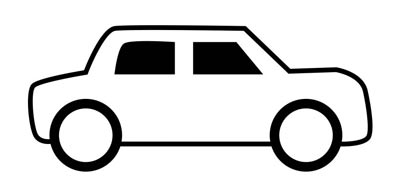
They know a car has four wheels. The wheels are round. It has windows and an exhaust pipe.
What they are lacking is the intimate knowledge of the object.
And that brings me to the next point:
What You Have To Study To Learn How To Draw Anything
Like I said, the brain stores a symbolic image of everything in your mind. Your goal as an artist must be to get rid of this symbolic interpretation and replace it with a more accurate one. One that is so detailed and precise that it enables you to draw that certain object in a way that looks visually pleasing.
To learn how to draw anything you have to study each and every thing you want to draw in detail. What you have to study is:
- Anatomy
- Proportions
- Perspective
- Color
Before you jump into it, also check out my article on the things a beginner artist should learn.
1. Anatomy
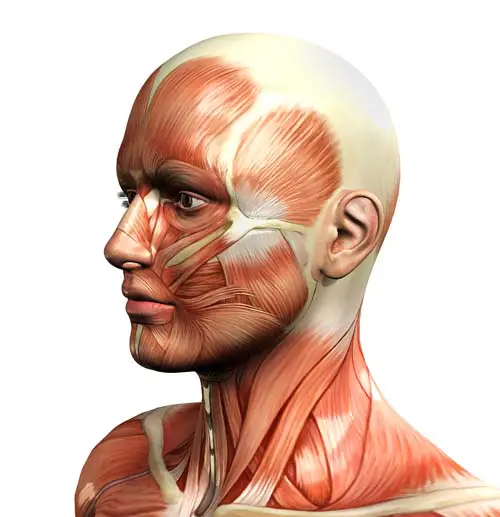
Anatomy describes the structure of organisms and their parts.
You most definitely know the term anatomy from human anatomy. It’s the branch of biology that studies all the different bones and muscles in the body.
In a very basic sense, the anatomy of a human face is that it’s made up of eyes, eyebrows, a nose, a mouth, ears, a chin, etc. You’d have to study how each of these look with all their little peculiarities.
The same goes for everything else you want to draw. You first have to study that thing and look at what parts it’s made of.
Improve Faster With My FREE e-Book!

Learn how to MASTER drawing in 5 easy steps with my FREE PDF guide!
Discover a methodical way to learn drawing effectively!
2. Proportions
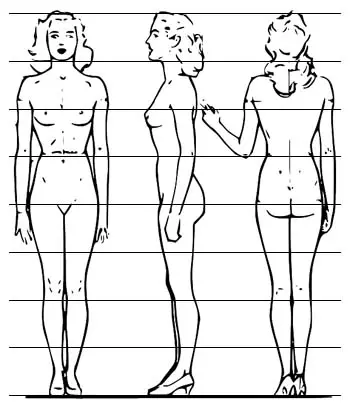
Proportion describes the relation of the parts of an object to each other and to the object as a whole.
Staying with the example above you would now have to study how each of the facial features relates to the other ones and to the face as a whole.
How long is the nose? How wide are the lips? How high are the eyes placed on the face? There’s actually quite a lot of questions like these you can ask, but it is possible to break down a face in simple terms.
3. Perspective

Perspective is the approximate representation of a flat image in a three-dimensional space.
Once you know what the object you want to draw is made of and what its proportions are, you have to learn how to depict it in perspective.
When you learn the basics of perspective drawing, it’s not that hard to draw something in perspective convincingly. You won’t always have to draw an intricate grid on your paper, unless your plan is to draw architecture.
A face can be rather difficult to draw in perspective though. Luckily, if you aren’t planning on becoming a professional comic book artist (are you?), you will probably draw a face from the front, in a ¾ view or in profile view most of the time.
4. Color
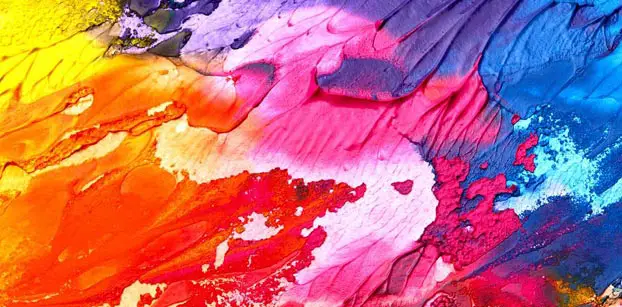
This one doesn’t need a quote as it’s rather obvious.
This is the part though, where everything I’ve written above comes together. Remember?
“Drawings/Paintings are a collection of shapes in different values/colors with either hard or soft edges.“
Unless you just want to create pure line drawings now is the time to look closely at your reference image(s). Again: Remember?
- What value/color is this shape?
- Does it have a hard or soft edge?
There are actually two major elements that influence what color and edge a shape has that warrant an article by itself:
4.1 Lighting

How an object is lit can make all the difference in what color it has. What is the light source in the image? How harsh is the light? What color is the light? Is there a second or third light source? Is there any reflected light in the scene?
Sunlight for example tends to cast very hard shadows, creates a strong contrast between light and shadow and generally leads to yellowish highlights and blueish shadows.
It doesn’t stop there:
4.2 Materials
The material an object is made of impacts its color and shading greatly.
Just for example, plastic generally has saturated colors, smooth shading and small specular highlights (the reflection of the light source).
Metal – chrome for example – has almost no real shading, but directly reflects its surroundings. Hence it’s characterized by extreme contrast between light and shadow and also picks up all sorts of different colors from the environment (see image below).
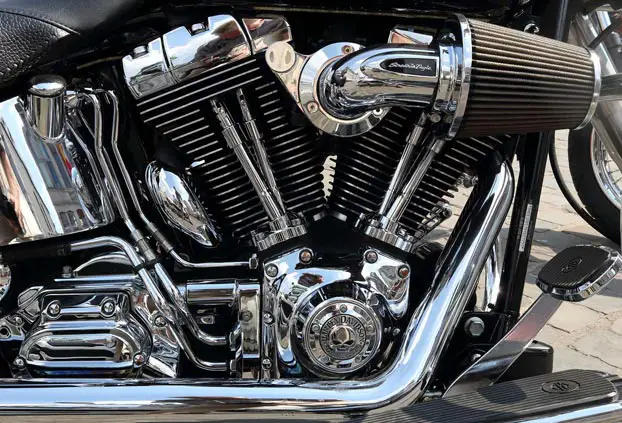
Like lighting, this warrants an article by itself.
Summary
Now, I get it, all this might seem overwhelming. To learn how to draw anything you „just“ have to study anatomy, proportions, perspective, lighting and materials.
The main point I want to make with this article is that you will never be able to draw EVERYTHING – but it’s possible to learn how to draw ANYTHING.
It’s a never-ending process though. You have to study each and every thing you want to draw that you aren’t familiar with yet. Anatomy, Proportions, etc.
That’s why there are people who specialize. People who focus mainly on drawing portraits, animals, architecture and whatnot…
An amateur would probably think „God, this dude can draw!“. The thing is, these people can probably draw that one thing they focus on very well, but would likely struggle a lot at first, if you asked them to draw something completely different.
I think that as a beginning artist you certainly already have a pretty good idea of what you want to draw. Maybe you want to draw cute animals. Maybe you want to draw portraits. Maybe you want to draw superheroes. Maybe you want to draw shiny cars.
Whatever it is, make sure that you focus your energy. Don’t draw a face one day and try drawing cars the next. It will hinder your progress because it will take you exponentially longer to get familiar with the characteristics of that certain object you want to draw.
The beautiful thing is that if you concentrate on getting good at drawing faces for example, you will improve your skills so much that you can learn how to draw other things way more easily.
You will get better at drawing in general to a certain degree and you will sharpen your eye, your ability to see and to pick up on things like anatomy, proportions, perspective and color.
Then it’s just a matter of using reference images to get the intimate knowledge of whatever it is you want to learn how to draw next. It should take you way less time than it first took you to learn how to draw faces.
Take Action!

Now it’s your turn!
Decide on what you want to draw first and get into it. Search for some good reference images and get to know the specific proportions and colors of your subject. Practice drawing it from different angles.
Then try drawing it without any references. If it looks good, well done! If not… compare it to the reference image objectively and see where you are off. Then just try again.
It’s just a matter of time before you get it right!
Let me know in the comments, if you found this helpful.
Now get to it and start creating!
-Daniel
P.S.: Just to let you know: I’m also on YouTube, Instagram and Facebook. I’d appreciate it, if you check it out!
READ NEXT:
How To Get Great At Drawing Fast: The Best Way To Practice

Great article. It was simple and concise, so it was easy for me to understand and remember.
Thank you.
Hey Linda!
I’m glad you like it. It’s cool that my very first article is still helping people. 🙂
i am looking forward on embarking on my art journey .It was informative , thanks hey
I’m glad I could help you a bit. Thanks for reading!